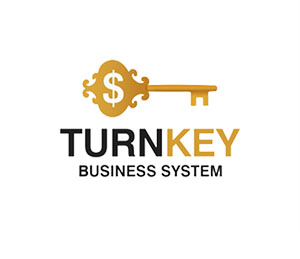
The Foundation of Currency Pairs
In the dynamic world of foreign exchange (Forex) trading, every transaction involves two currencies paired together.
The base currency —the first currency listed in a pair—plays a pivotal role in shaping trading strategies, risk management, and profit potential.
Whether you’re a novice trader or a seasoned investor, mastering the concept of the base currency is essential for navigating the $7.5 trillion daily Forex market with confidence.
The base currency —the first currency listed in a pair—plays a pivotal role in shaping trading strategies, risk management, and profit potential.
Whether you’re a novice trader or a seasoned investor, mastering the concept of the base currency is essential for navigating the $7.5 trillion daily Forex market with confidence.

The Foundation of Currency Pairs
What is a Base Currency?
In a currency pair (e.g., EUR/USD or GBP/JPY ), the base currency is the primary currency being bought or sold. It represents the asset you are trading, while the second currency (the quote currency ) indicates its value. For example:In EUR/USD , the euro (EUR) is the base currency, and the U.S. dollar (USD) is the quote currency.
If EUR/USD is trading at 1.20, it means 1 euro equals 1.20 U.S. dollars.
The base currency serves as the reference point for:
Exchange Rate Calculation : Determining how much of the quote currency is needed to purchase one unit of the base.
Directional Trading : A rising pair means the base currency is strengthening against the quote (e.g., buying EUR/USD implies bullishness on the euro).
Why the Base Currency Matters
1. Simplifying Market AnalysisThe base currency acts as the anchor for technical and fundamental analysis. Traders analyze economic indicators (e.g., interest rates, GDP) of the base currency’s country to predict trends. For instance, strong Eurozone inflation data could boost the EUR against the USD.
2. Position Sizing & Risk Management
Margin requirements and position sizes are calculated based on the base currency. If your trading account is denominated in USD and you trade EUR/USD , your margin is calculated in euros, requiring careful conversion to avoid over-leverage.
3. Psychological Impact
The choice of base currency influences trader psychology. For example, traders may perceive USD/JPY (USD as base) differently than JPY/USD , even though they are inversely related.
Major Currency Pairs & Their Base Currencies
The Forex market revolves around major pairs , where the base currency is typically a globally dominant currency:EUR/USD- Euro (EUR)- U.S. Dollar (USD) - "Fiber"
GBP/USD - British Pound (GBP) - U.S. Dollar (USD) - "Cable"
USD/JPY - U.S. Dollar (USD) - Japanese Yen (JPY) - "Ninja"
USD/CHF - U.S. Dollar (USD) - Swiss Franc (CHF) - "Swissy"
Exotic pairs (e.g., USD/TRY , EUR/SEK ) often use emerging market currencies as the base, offering higher volatility but increased risk.
Common Misconceptions About Base Currencies
“The Base Currency is Always the Domestic Currency”False. While pairs like USD/JPY use the USD as the base in Japan, the base currency is determined by market conventions, not geography.
“The Base Currency is the Stronger One”
Not necessarily. The base currency’s strength depends on market conditions. For example, in EUR/USD , the euro could weaken or strengthen relative to the dollar.
“Base and Quote Currencies are Interchangeable”
Incorrect. Inverting a pair (e.g., USD/EUR ) changes its liquidity and spread, making it less practical for trading.
How to Choose a Base Currency for Trading
Align with Your Strategy :Trend Followers : Focus on majors like EUR/USD or GBP/USD , which offer high liquidity and clear trends.
Volatility Seekers : Explore exotic pairs like USD/ZAR (South African Rand) for larger price swings.
Consider Economic Factors :
Monitor central bank policies (e.g., Fed, ECB) and macroeconomic data (non-farm payrolls, CPI) affecting the base currency.
Account Currency Compatibility :
Trading pairs where your account currency is the base (e.g., using USD in USD/JPY ) reduces conversion costs.
Market Hours :
Trade pairs active during your preferred session. For example, EUR/USD is most volatile during the London-New York overlap (8:00 AM–12:00 PM EST).
The Role of Base Currency in Profit & Loss
Your profit or loss depends on the base currency’s movement. For example:If you buy 10,000 units of EUR/USD at 1.20 and sell at 1.22, you profit from the euro’s appreciation:
Profit = (1.22 – 1.20) × 10,000 = $200.
Conversely, a decline in the base currency (e.g., EUR/USD dropping to 1.18) results in a loss.
Tips for Trading Base Currencies Successfully
Stay Informed : Follow news impacting the base currency’s economy (e.g., Brexit for GBP, ECB rate decisions for EUR).Use Technical Indicators : Tools like RSI, MACD, and Fibonacci retracements help identify entry/exit points.
Hedge Currency Risk : Use options or correlated pairs to offset potential losses.
Practice with Demo Accounts : Test strategies risk-free before committing capital.
The Future of Base Currencies
As global economies evolve, new base currencies may emerge. Cryptocurrencies like Bitcoin (BTC) are increasingly paired with fiat (e.g., BTC/USD ), while emerging markets like India and Brazil push for greater inclusion in Forex pairs.
Conclusion
The base currency is the cornerstone of every Forex trade, shaping how traders analyze markets, manage risk, and execute strategies.
By understanding its role, you can unlock opportunities in major pairs, navigate volatility with confidence, and build a disciplined approach to currency trading.
Whether you’re trading the euro’s resilience or the dollar’s dominance, mastering the base currency is your first step toward Forex success.
Key Takeaway : The base currency isn’t just the first half of a pair—it’s the lens through which you view the entire Forex market. Treat it with the attention it deserves, and watch your trading precision soar.
The base currency is the cornerstone of every Forex trade, shaping how traders analyze markets, manage risk, and execute strategies.
By understanding its role, you can unlock opportunities in major pairs, navigate volatility with confidence, and build a disciplined approach to currency trading.
Whether you’re trading the euro’s resilience or the dollar’s dominance, mastering the base currency is your first step toward Forex success.
Key Takeaway : The base currency isn’t just the first half of a pair—it’s the lens through which you view the entire Forex market. Treat it with the attention it deserves, and watch your trading precision soar.









Report
My comments